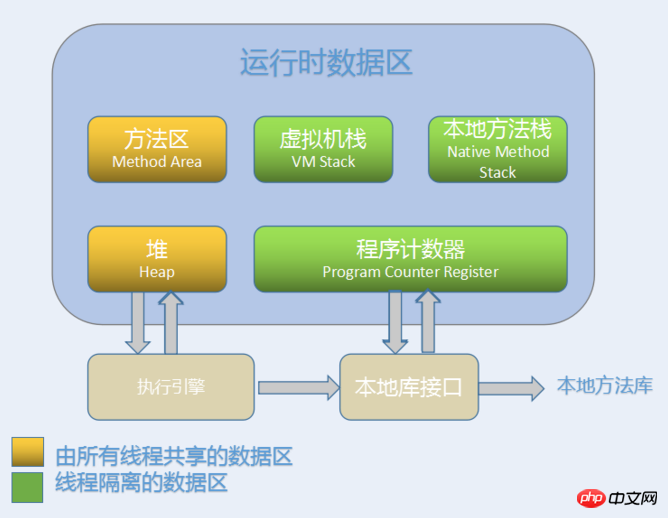
This article mainly introduces relevant information on the detailed explanation of the memory runtime data area managed by the Java virtual machine. Friends in need can refer to
Detailed explanation of the memory runtime data area managed by the Java virtual machine.
Overview
During the execution of a Java program, the Java virtual machine will divide the memory it manages into several different data areas. These areas have their own purposes, as well as the time of creation and destruction. Some areas exist with the startup of the virtual machine process, and some areas are created and destroyed depending on the start and end of the user thread.

Program Counter
The program counter is a small memory space. It can be regarded as the words executed by the current thread. Line number indicator for section code. In the virtual machine conceptmodel, the bytecode interpreter works by changing the value of this counter to select the next bytecode instruction that needs to be executed, branch, loop, Jump, Exception handling, thread recovery and other basic functions all need to rely on this counter to complete.
If the thread is executing a Java method, this counter records the address of the virtual machine bytecode instruction being executed. If the thread is executing a Native method, the counter value is empty. This memory area is the only area that does not specify any OurOfMemoryError conditions in the Java Virtual Machine Specification.
Virtual machine stack
Like the program counter, the Java virtual machine stack is also private to the thread, and its life cycle is the same as the thread. The virtual machine stack describes the memory model of Java method execution. When each method is executed, a stack frame (Stack Frame) is created to store local variable tables, operand stacks, dynamic links, methods Export and other information. The process from the call to the completion of execution of each method corresponds to the process from pushing a stack frame into the virtual machine stack to popping it out.
The local variable table stores various basic data types (boolean, byte, char, short, int, float, long, double) and object references that are known during compilation. and bytecode instruction address (returnAddress type).
In the Java virtual machine specification, two exception conditions are specified for this area: if the stack depth requested by the thread is greater than the depth allowed by the virtual machine, a StackOverflowError exception will be thrown; if the virtual machine stack can be dynamically expanded , an OutOfMemoryError exception will be thrown when it cannot apply for enough memory during expansion.
For 32-bit jvm, the default size is 256kb, while for 64-bit jvm, the default size is 512kb. You can set the maximum value of the virtual machine stack through -Xss. However, if the setting is too large, it will affect the number of threads that can be created.
Method area
The method area, like the Java heap, is a memory area shared by each thread. It is used to store class information and constants that have been loaded by the virtual machine. Static variables, code compiled by the just-in-time compiler and other data.
According to the Java Virtual Machine Specification, when the method area cannot meet the memory allocation requirements, an OutOfMemoryError exception will be thrown.
Native Method Stack
Native Method Stacks (Native Method Stacks) play a very similar role to the virtual machine stack. The difference is that the virtual machine stack executes Java for the virtual machine. Method services, while the local method stack serves the Native methods used by the virtual machine.
Java Heap
The Java heap (java heap) is the largest piece of memory managed by the Java virtual machine. It is a memory area shared by all threads. Created when the virtual machine starts, the only purpose of this memory area is to store object instances. Almost all object instances allocate memory here.
The Java heap is the main area for garbage collection management, so it is often called the "GC" heap.
According to the Java Virtual Machine Specification, the Java heap can be in physically discontinuous memory space, as long as it is logically continuous, just like our disk space. When implemented, it can be implemented as either a fixed size or scalable. However, the current mainstream virtual machines are all implemented as scalable. (Controlled by -Xmx and -Xms) If there is no memory in the heap to complete the instance allocation, and the heap can no longer be expanded, an OutOfMemoryError exception will be thrown.
The above is the detailed content of Detailed introduction to the memory runtime data area managed by the Java virtual machine. For more information, please follow other related articles on the PHP Chinese website!




